Translation
Overview
The TechChange platform gives users the ability to navigate the platform in different languages.
Translations for static content will already be provided while user-generated content must be manually translated.
This guide will walk you through how multi-language content is delivered on the platform as well as how you can set up your courses to provide a multilingual experience for your users.
Supported Languages
The TechChange platform supports translation of platform content for the following languages:
- Arabic
- English
- French
- Hindi
- Portuguese
- Romanian
- Spanish
- Swahili
Please reach out to the Tech Team to request a new language.
Content Types
Content on the platform consists of both static content and user-generated content. See below for an overview of each type of content.
Static content, such as button labels and login form text, will already have translations provided.
User-generated content, however, will need to be manually translated.
Static Content
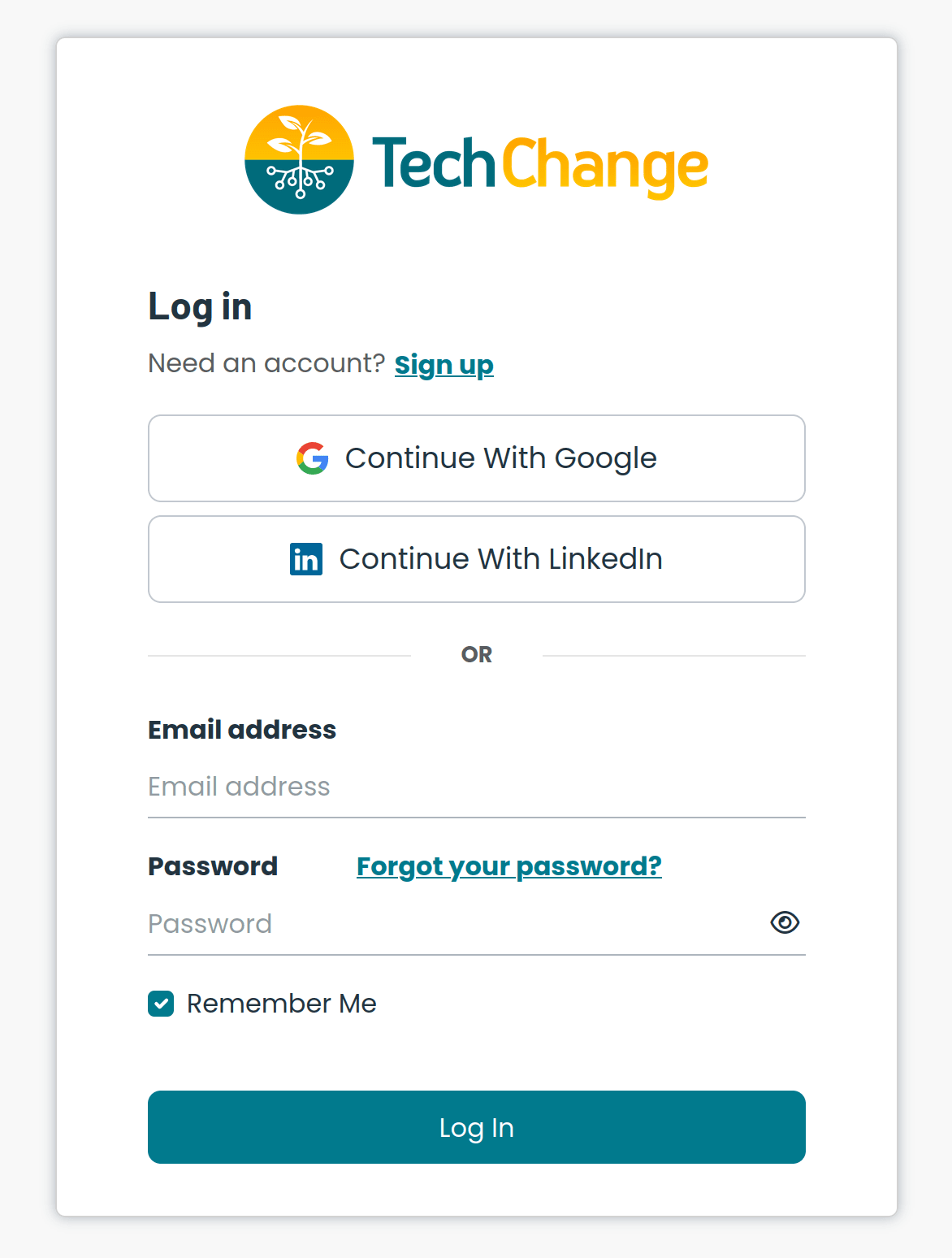
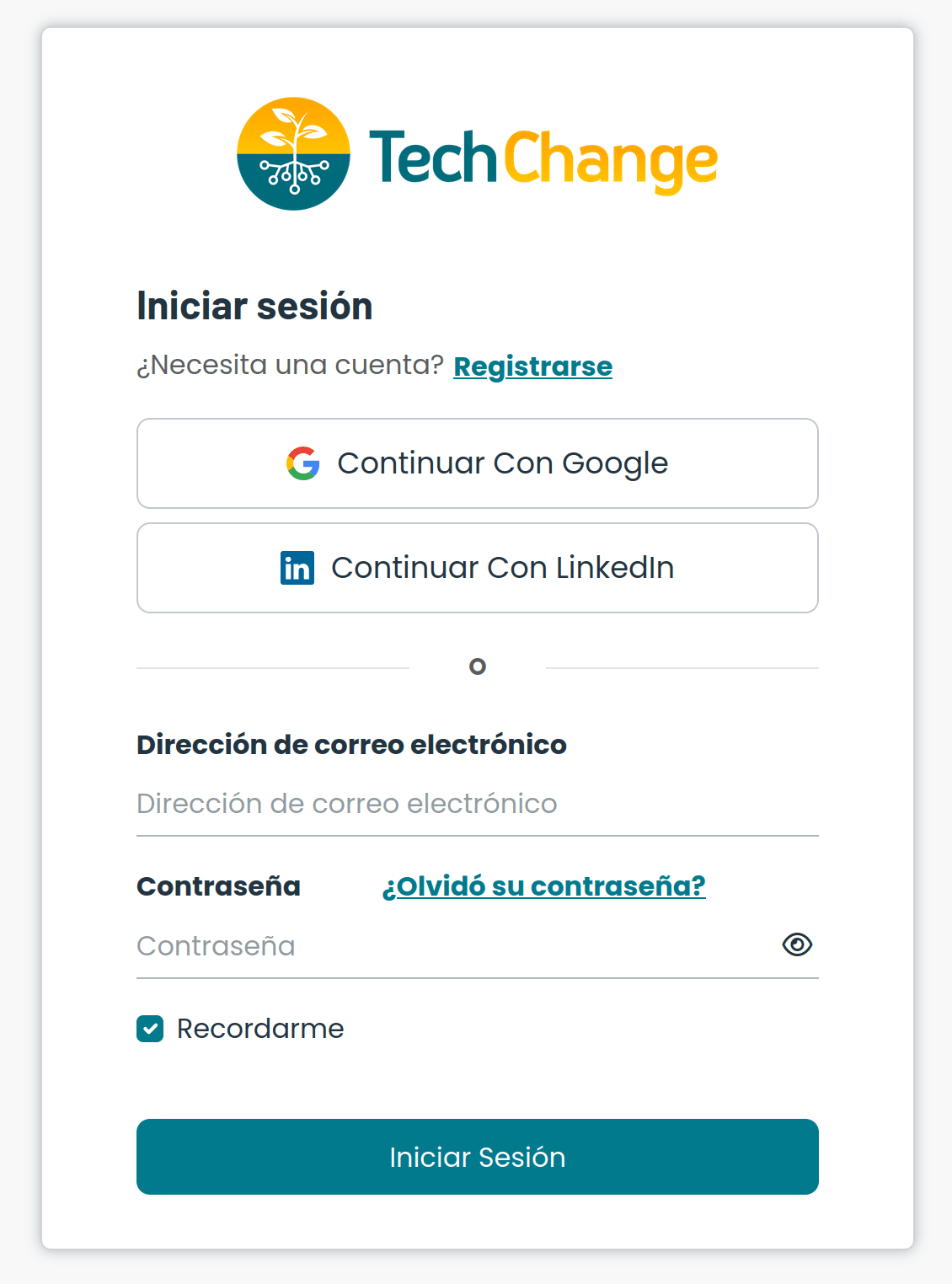
Static content refers to any text throughout the platform that cannot be customized by a partner organization. A few examples include:
- Button text throughout the platform
- Login and registration form text
- Settings page text
Static content will translate automatically depending on the partner organization's default language and the user's language setting (see Language Settings for more details). Translation support for static content is currently limited to the languages listed above.
Note: After updating your language setting, you may notice that some of the text throughout the platform UI may still be in English. Because we are always making new updates to the platform, we may not always have up-to-date translations for the latest platform features. Please reach out to the Tech Team if you notice missing translations for static content.
User-Generated Content
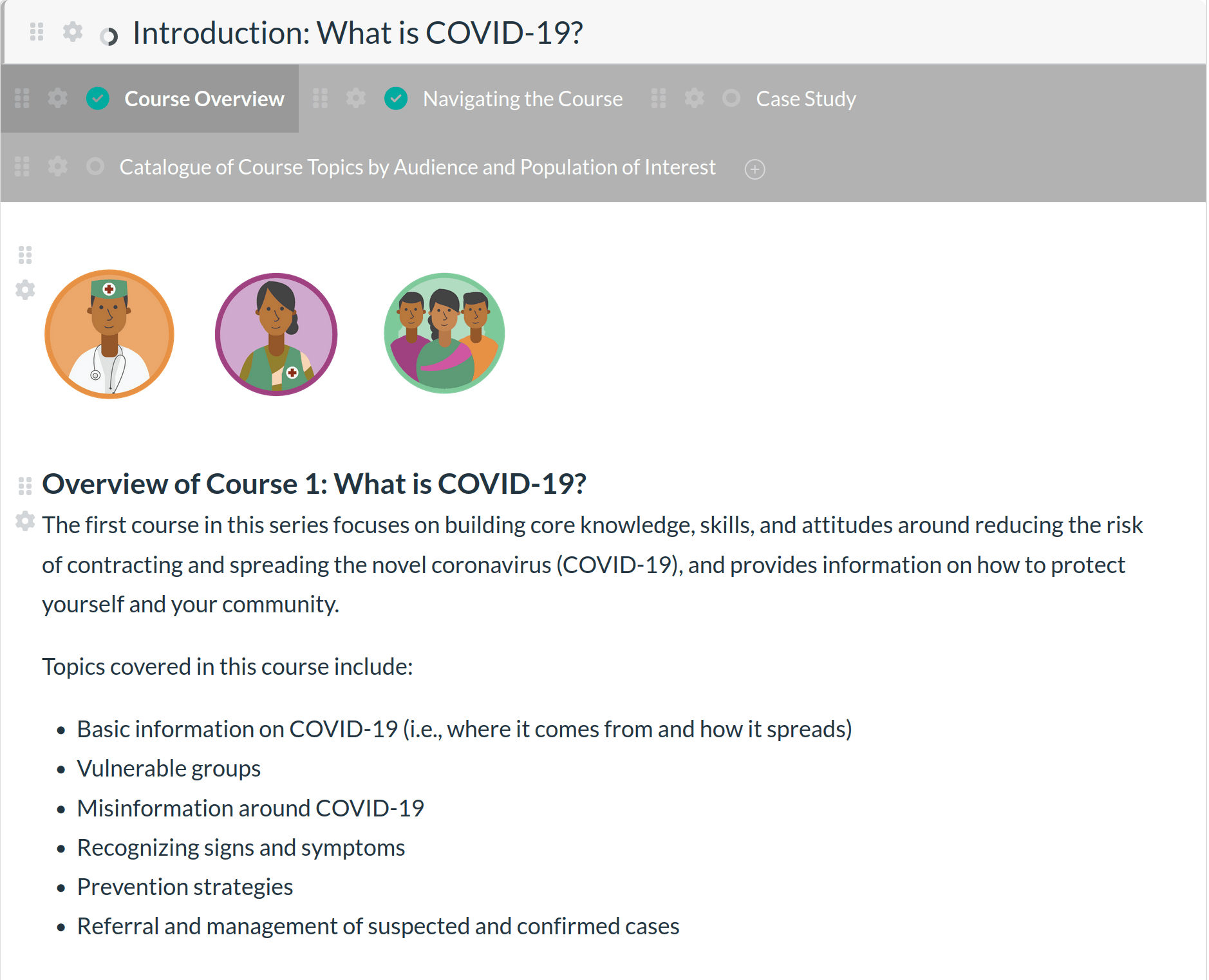
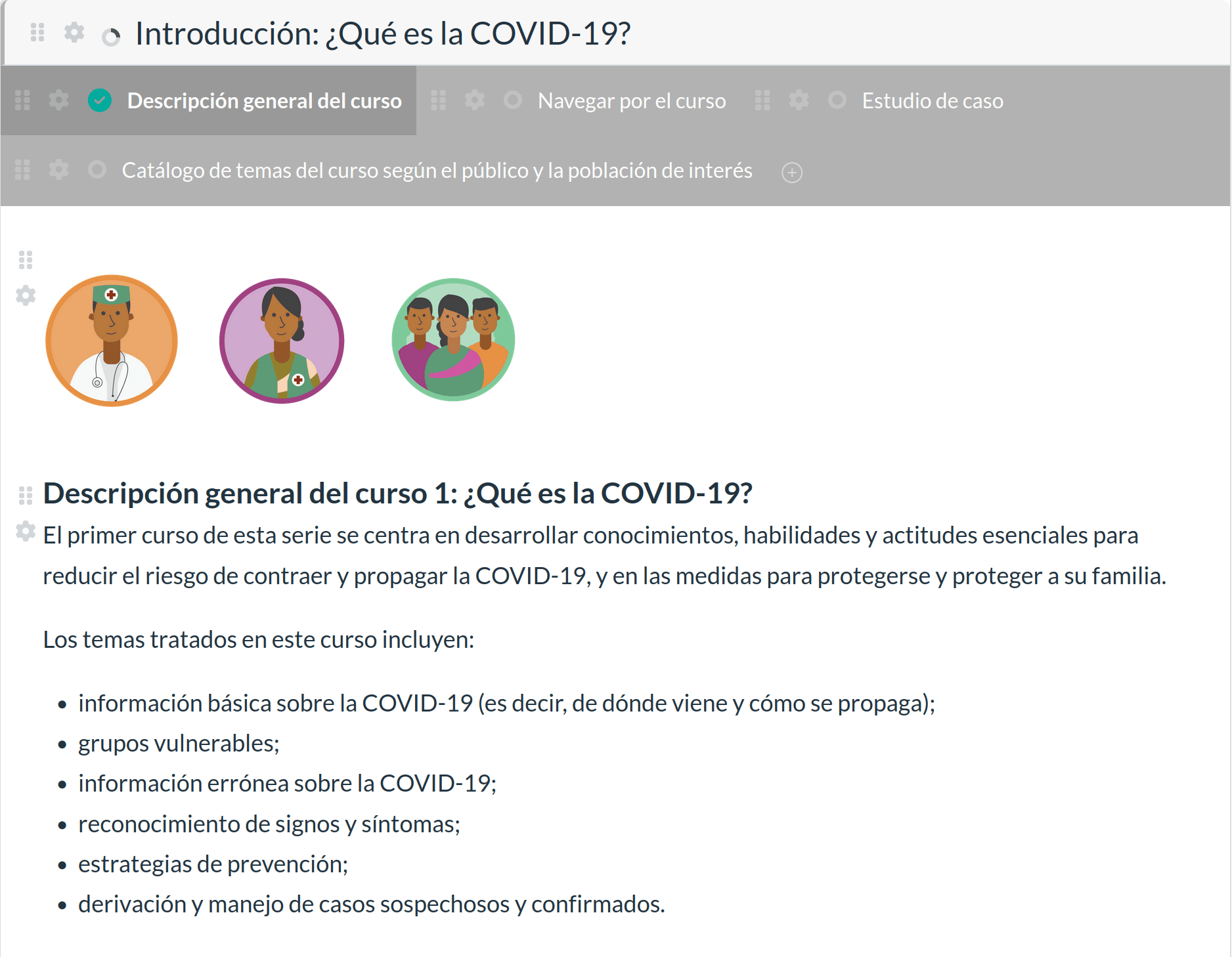
User-generated content is any text that is created by a user on the platform. For example, this can be a student's comment on a discussion thread or a chat message. It can also be any content added by an administrator such as course content, a description for the catalog listing, or application form questions. Translations for this type of content are not automatically provided and must be explicitly specified if you intend to make your course available in multiple languages. See Creating a Multi-Language Course for more details.
Language Settings
The various language settings on the platform will determine the language of the content that a user sees. A default language can be set within both the organization and course context. Note that whenever possible, the platform will prioritize an individual user's language setting if a translation in that language is available. If not, the default language of the context will be shown.
Organization
As an administrator, you can choose the default language for the organization. The default language will be used in the case where an individual user has not selected a preferred language. If no default language is set for the organization, English will serve as the fallback. You can update the default language for an organization as follows:
- Navigate to the homepage of the Admin Portal.
- Click the Settings button.
- Select the General menu item.
- Select the default language from the list of possible options.
- Click the Save Changes button.
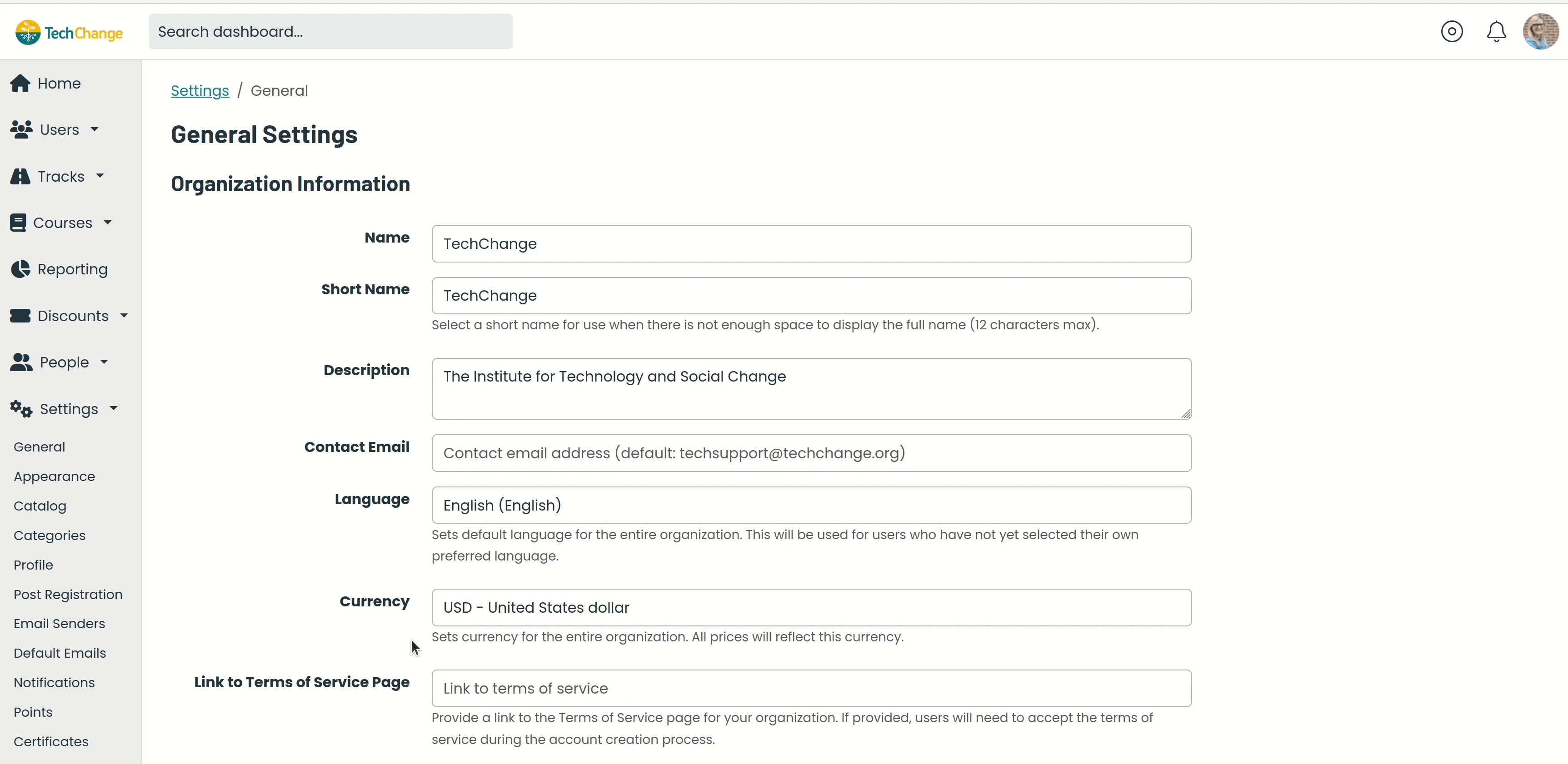
Courses and Tracks
A default language must be specified when creating a new course or track. This setting determines the fallback translation to use if a translation for course content does not exist in the user's preferred language. See the section Choose the Default Language below for more information.
User
A user's language setting takes highest priority. This setting will only be defined when a user explicitly sets their language on the platform. The platform language for a user can be changed by clicking on the user avatar in the top right corner of the screen. From the dropdown menu, click the Change Language option and select the desired language from the dropdown. After selecting the language, you should see the platform UI language change.

If a user has not set their language on the platform, we will attempt to guess their preferred language from the user's browser language setting.
Creating a Multi-Language Course
As discussed above, only static content will be automatically translated on the platform. Course content created by administrators will need to be manually translated.
This section will walk you through the steps required to translate content for a course.
Choose the Default Language
When you create your course from the admin portal, you will need to specify a default language. This will be the fallback language for users viewing the course when there is no available translation that matches their personal language setting. For example, consider a course that only has English and Spanish translations. If the default language for the course is set to English and a user has their personal language set to French, they will see the course content in English since there is no French translation available.
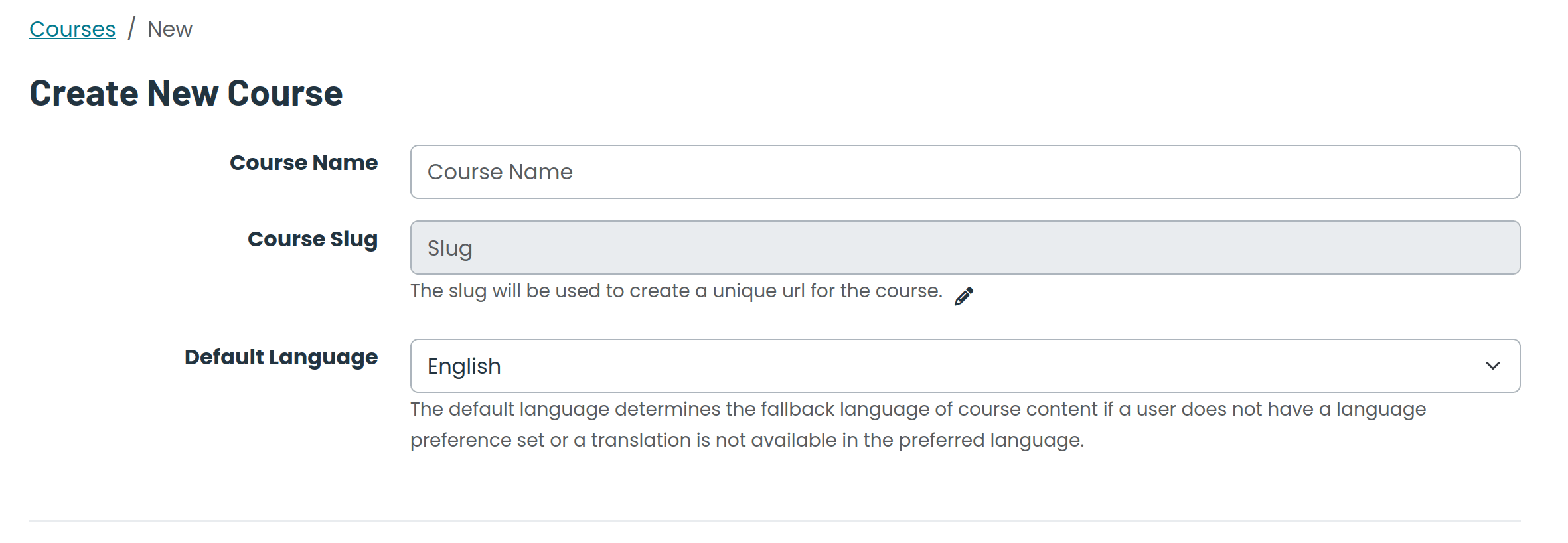
Note: The default language cannot be changed after your course is created. If you need to change the default language for your course, please reach out to the Tech Team.
Create the Base Content
Once you have created your course on the platform and have determined a default language for the course, you can now begin to add your content. This content will serve as the basis for all other translations and should be written in the course default language as determined in the previous step. Note the Language form field as you add content to the platform for resources, menu items, forms, polls, quizzes, etc.
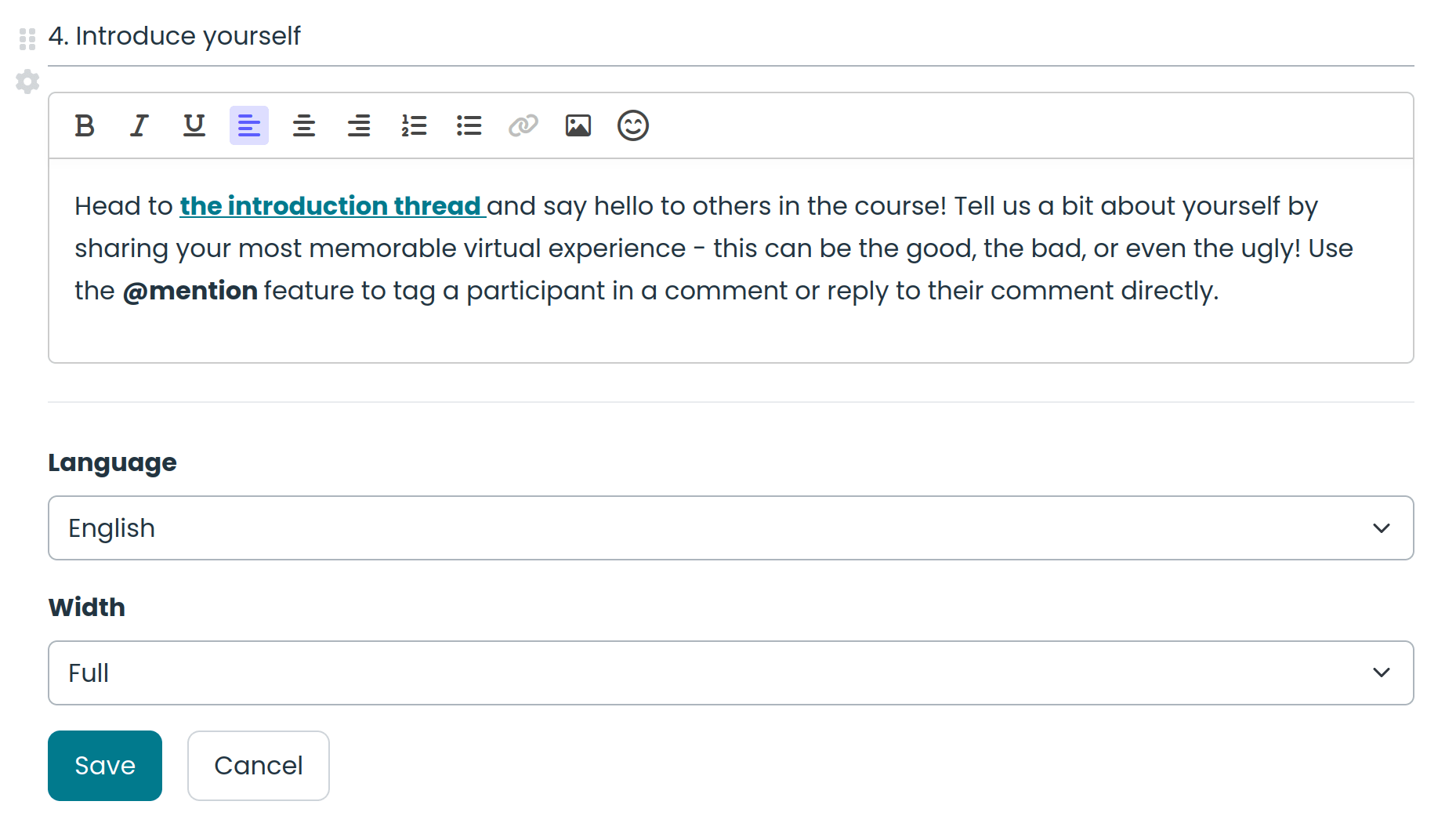
Translate the Base Content
Once you have finalized your base content, you are now ready to translate it!
Content to Translate
Note: We are currently in the process of updating the platform to support multiple translations within a single course. Some content types will support this new paradigm while others won't. If a content type needed for your course does not currently support the new multi-language feature, you will still need to create a separate course for each language instead. If that is the case, it is recommended to clone the default version of the course when creating the new course for the translated version and then follow the steps below for the cloned course. Please reach out to the Tech Team if you have any questions.
Below is the list of admin-generated content that needs to be translated for the full multi-language experience.
Depending on your specific course set-up, some or all of these will need to be translated.
Multi-language support outside of courses (i.e. for your platform as a whole):
- Profile form
- Post-Registration form
Multi-language support within a single course:
- Application form
- Catalog Listing pages
- Chat messages (via automated AI translation)
- Course session resources
- Course session forms, polls, and quizzes
- Course session navigational menu items
- Discussion thread descriptions
- Event descriptions
Separate course required for each language:
- Chat channel titles and descriptions
- Certificates
- Discussion thread titles and comments
- Event titles and videos
No multi-language support:
- Emails
- The default copy for transactional emails have translations. However, we do not currently support translations of custom email content or session-specific transactional emails. A common work-around is to include all translations within the custom email body, e.g. "Name / Nombre / Nom".
How to Translate
There are 3 different methods that you can use to translate the base content:
- Manually add/edit/remove translation(s) of content using the editor
- Lokalise
- CSV Exports & Imports